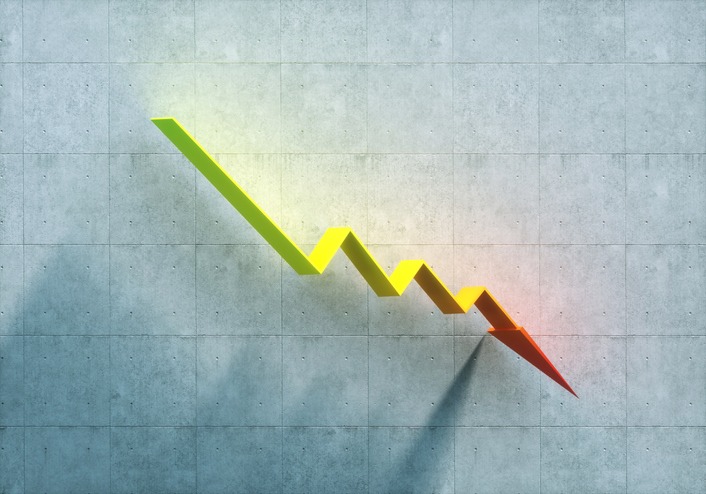Chip shortage limits recovery of EU new-car markets in September
04 October 2021

Autovista24 senior data journalist Neil King discusses how the shortage of semiconductors impeded the recovery of new-car markets in France, Italy, and Spain in September.
New-car registrations in three of Europe’s major markets declined by more than 20% in September, compared to 2019. Although the downturns in France, Italy and Spain were less severe than in August, when the markets engaged reverse gear, the shortage of components continues to disconnect the conversion of sales into registrations. Furthermore, there are signs that the delivery delays are deterring consumers from ordering new cars, reducing underlying demand. With the anticipated recovery postponed further, Autovista24 has revised the 2021 forecast for all three markets downwards.
As registrations across Europe endured troughs because of COVID-19 lockdowns and peaks as pent-up demand was released, year-on-year comparisons with 2020 are meaningless. Therefore, this article focuses on the latest developments compared to 2019, which better represents the true performance of new-car markets.
Modest improvement in France
According to data released by Plateforme Automobile (PFA), the French automotive-industry body, 133,835 new cars were registered in France in September. This is far below the average of just under 160,000 registrations for the month between 2010 and 2019. Compared to 2019, the market contracted by 22.8% in September, a modest improvement on the 31.9% decline in August. There was one more working day in both months than in 2019, making the downturns comparable. Nevertheless, on an adjusted basis, Autovista24 calculates that the market fell by 26.3% in September and 35% in August.
In addition to the challenges of the COVID-19 pandemic and semiconductor shortages, the reduction in French incentives for electrically-chargeable vehicles (EVs) since 1 July has also impacted demand. Consequently, cumulative registrations in the first three quarters of the year were 23.2% lower than in the same period in 2019, albeit slightly up on the 23.3% contraction in the first eight months. The reduction of EV incentives has stabilised the market shares of both plug-in hybrids (PHEVs) and battery-electric vehicles (BEVs), at 8.1% and 8.5%, respectively.
Given the latest market development and the semiconductor shortage expected to impede the market recovery into 2022, Autovista24 has downgraded its forecast to 4.7% year-on-year growth in 2021, following the 25.5% contraction in 2020, to below 1.73 million units. This is 21.9% lower than the volume of cars registered in pre-crisis 2019.
End of incentives in Italy
In Italy, the industry association ANFIA reports that 105,175 new cars were registered last month. Compared to September 2019, the market contracted by 26.2%, only subtly better than the 27.4% fall in August. There was an additional working day in each month, and on an adjusted basis, Autovista24 calculates that the market fell by 29.6%, slightly improving on the 30.8% decline in August.
In addition to the semiconductor shortage, the end of Ecobonus incentives has curtailed market activity in Italy. ‘The rapid exhaustion of resources a few days after the refinancing at the beginning of September is proof of the fact that the “expected” effect of the new incentives and their provision “in fits and starts” are detrimental to both demand and the sales network,’ commented Paolo Scudieri, president of ANFIA.
‘We hope that a program of support measures will be outlined for the future, consistent with an overall strategic plan to accompany the sector in its ecological transition, and over a multi-year time horizon, ensuring greater continuity in the market,’ Scudieri added.
The new-car market has retreated slightly from its cumulative 20% decline in the first eight months of 2021 to a 20.6% contraction through to September. The pace of conversion of new-car orders into registrations is unlikely to improve significantly in 2021. In the absence of a refinancing of purchase incentives, Autovista24 predicts that the market will grow only 9% year on year in 2021, to just over 1.5 million units. At this level, the market will be 21.4% smaller than in 2019.
Similarly, ANFIA has reduced its year-end forecast downwards to ‘about 1,500,000 registrations.’
Economic and supply issues negate tax-cut benefits in Spain
A total of 59,641 new cars were registered in Spain during September, according to ANFAC, the Spanish vehicle manufacturers’ association. As in August, this is the lowest tally for the month since 2014. However, the market contraction of 27% last month, compared to pre-COVID levels, is a healthy improvement on the 36.1% downturn in August. As in France and Italy, there was one more working day in both August and September. On an adjusted basis, the downturn was 30.4% last month, improving on the adjusted 39% decline in August.
The reduction of car-registration taxes in the country since 1 July is having a positive effect, albeit delayed because of the semiconductor-induced delays to deliveries. Compared to the first three quarters of 2019, cumulative registrations of new cars are down 32.9%, slightly up on the 33.4% fall through to August. Nevertheless, the Spanish market must also contend with the fallout from the COVID-19 pandemic, inflationary pressure, and the chip shortage.
‘The global chip crisis continues to take its toll on the automotive industry. Added to the shortage of semiconductors is the runaway rise in the price of raw materials and logistics costs, especially shipping. If, to the lack of supply, we add the September decline and the technological uncertainty that is detected among buyers when choosing a car, we have a perfect storm for the final stretch of the year,’ commented Tania Puche, communications director of the Spanish dealers’ association GANVAM.
Raúl Morales, communications director of Faconauto, added; ‘The dealerships still do not have enough stock to meet demand, despite which many customers are showing more and more understanding of this situation and are willing to wait for their vehicle. In any case, the uncertainty is great, because there is no clear horizon of when there will be cars on the market again.’
Given the limited impact of the registration-tax cut in Spain and the ongoing economic and supply issues, Autovista24 has revised its forecast for 2021 down to 885,000 units, equating to year-on-year growth of 4%. This follows a 32.4% contraction in 2020 and, with this weakened outlook, the Spanish market will be 29.6% smaller this year than in 2019.



